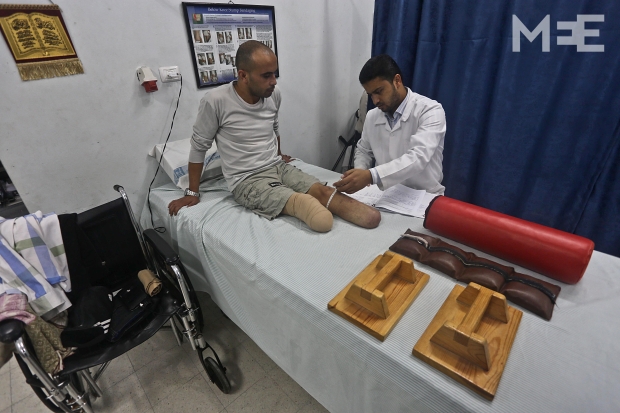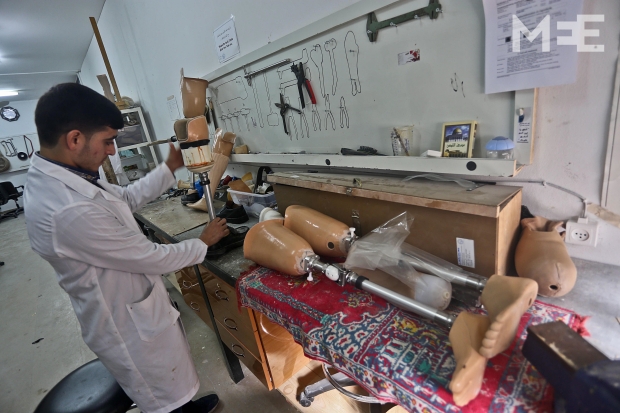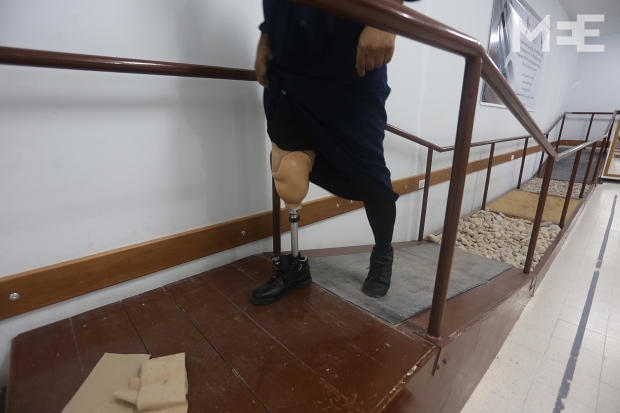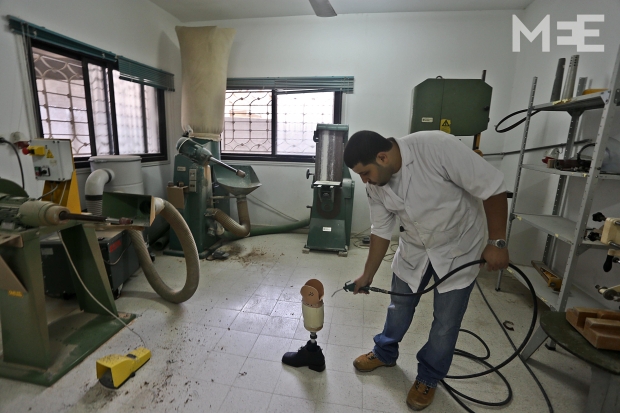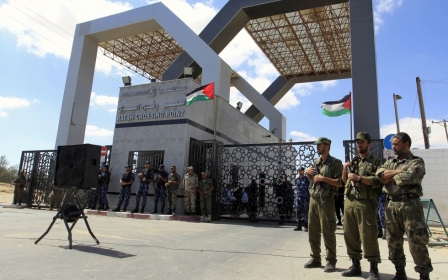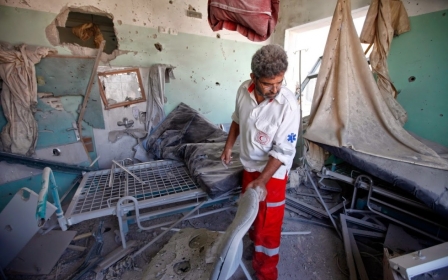Prosthetic limbs: A fresh start for war wounded Gazans
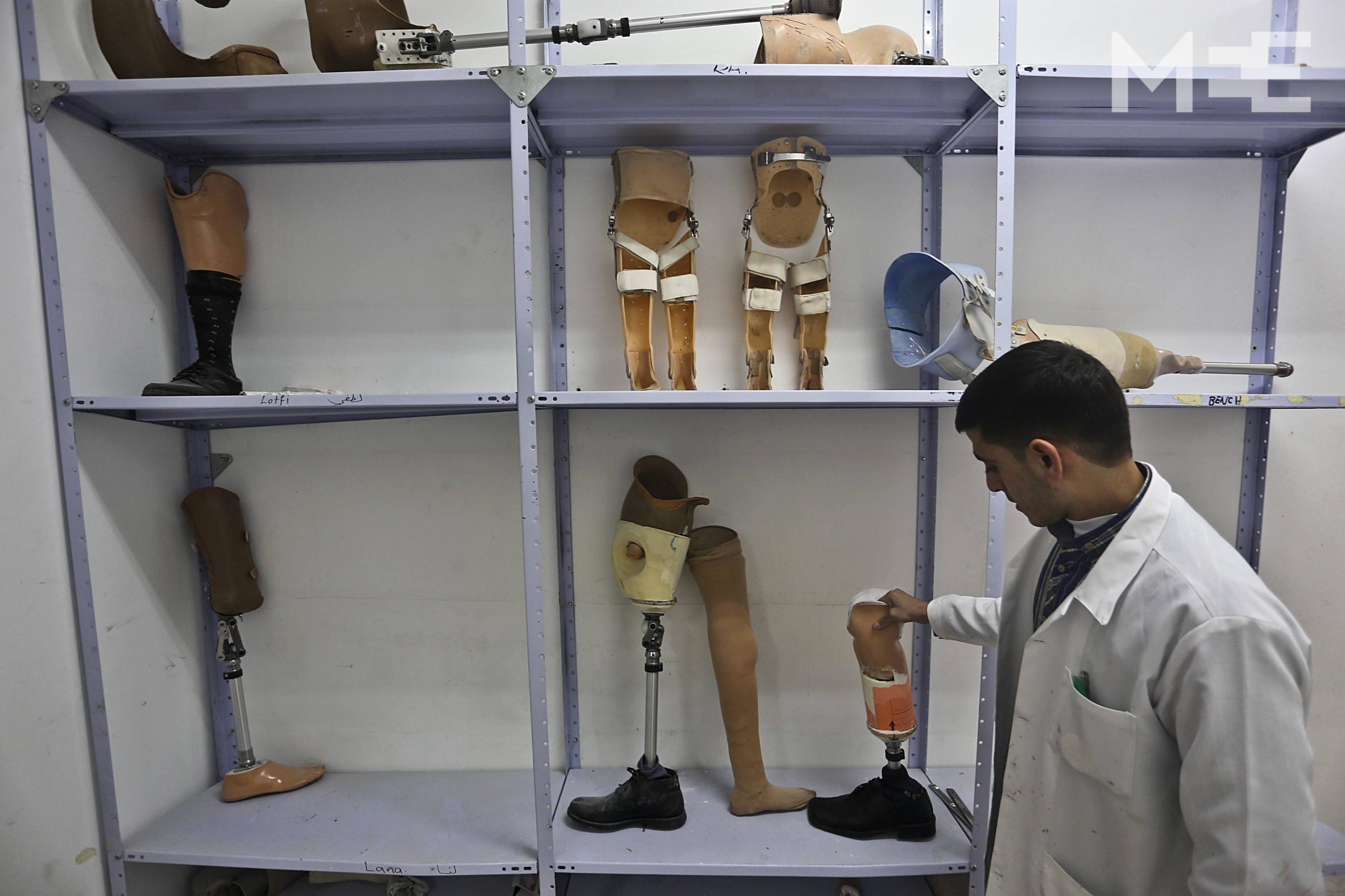
GAZA CITY: Mahmoud Naouq looks at the pair of shoes on the floor that he used to wear every day. Neither of them are needed now. The young Palestinian's dreams vanished the afternoon an Israeli artillery shell hit his home in Deir al-Balah, central Gaza Strip.
His dream may be gone, but not his will, he said. He wakes up every morning, determined to pick up his life and carry on after losing both legs to the artillery shell.
The tank shell was scorching hot, but now his first prosthetic leg feels very cold as he tries it on, during one of Gaza's coldest mornings.
He leans forward on a bed in Gaza’s Artificial Limbs and Polio Centre, while a physiotherapist helps stabilise his movements from the upper waist.
Naouq was supposed to travel to Germany to receive two new prosthetic legs - but the closure of Gaza’s border crossings made it impossible for him to travel.
“I did not want to wait for Israel to lift the blockade, so I decided to come to this centre,” he said.
He never thought artificial limbs in Gaza would be a good idea. But once he saw some of his young friends - who had also lost their legs to Israeli weapons - wearing prosthetic legs, he decided to try.
Naouq is 32-years-old and married. He says that that despite the trauma of being a double amputee, his life has taken a positive turn.
Prior to his injuries, he worked for an internet provider, He was known by his friends for being a very energetic and active young man, whose fingers would whiz around the keyboard, solving the most complicated problems.
“I feel more love, support and sympathy from people now than before my injuries, and Gazan society is non-discriminating toward me," he said with a broad smile.
His life has certainly changed; he said he was always depressed during the war, with no hope for a better life, but now he feels his life has just started, with new energy, challenge and determination.
“My life is taking a new shape, and it will be much better, even if my own legs have gone,” he said.
He gave away his rented apartment, came back to live with his family, and feels happier than before with his family around him who can give him all the love and support he needs, in his life, as he moves on.
The Artificial Limbs and Polio Centre now receives hundreds of cases needing help, including children who have lost their limbs to Israeli weapons.
Naouq's determination is also powered by his ability to tell the story behind the loss of his legs, on 21 July, at 2:30 pm, while sitting in his bedroom, facing the eastern side of Al-Aqsa Hospital, in Deir al-Balah.
There was an explosion nearby. He rushed out onto his balcony to see his next-door neighbours' home had been hit by a tank shell. He ran back into the bedroom and urged his wife to move quickly into the lounge, where he hoped they'd be safer.
But, she stayed behind as he rushed into the living room - a few seconds later, the tank shell struck.
The ambulance took him to the hospital. Ironically, the hospital was struck by an Israeli missile while Naouq was being treated.
His treating physiotherapist, Hamada Al-Dahdouh, says that patients usually need to be physically and psychologically prepared and ready to wear the prosthetic limbs.
The centre offers training for patients to make sure prostheses are fitted safely and securely.
Inside the centre is a factory that produces all specifications of artificial limbs - Mohammed Sobeh, 22-years-old and an occupational therapist stands making an artificial leg for a 10-year-old child, another amputee from Israel's war on Gaza.
“Usually it takes about a week to produce a prosthetic leg of this size and specifications,” he said, while trimming the edge of the new prosthetic leg. Everyone is busy on the machines - buzzing like bees in a honey comb - producing artificial limbs for war victims.
“There are so many demands on us,” said the occupational therapist, as a man comes in to say that his prosthetic hurts his bones when he wears it.
Sobeh says that he now has a new contract to work for another year following the war - but prior to the war, he faced redundancy due to lack of work. Now, together with eight of his colleagues, he has received an extension of contract to continue to manufacture prosthetic limbs.
For Naouq, life has just started again - he needs to be trained how to use new two limbs to start for his life to continue - as he relearns how to climb stairs and walk up and down hills and take corners.
Now with his new limbs, and with the support of his family and friends, he feels he has a comfortable chance of surviving the nightmares of the past summer without his own legs. Life is not easy, but at least his new legs put him on the road to progress.
Naouq often wants to do things that he used to be able to do before his disability, but he finds himself unable to participate in sports and other activities that he enjoyed previous to the July 2014 Israeli attacks. However, he's ready to adapt. At some stage, once he has received both prosthetic legs and is prepared to go home with them, he will be able to pick up one of his old shoes and walk in it.
“I am aware, it is a new life – a new beginning” he said, while smiling at his therapist who is training him to move around.
Hazem Sahwwa, the Director of the Centre, explains that his centre is currently treating around 950 amputees. Unsure of the exact number of amputees, since some have been able to leave Gaza to seek medical treatment elsewhere, he estimates that Gaza is now home to at least 3000 amputees since the last war.
Gazans from some areas were worse affected than others because of the way that certain neighbourhoods were targeted in Israel's last assault on the strip with approximately 5-7% of people now suffering from disabilities in areas like Shejaeyah, Qarara and Khuzaa, where Israeli shelling was particularly heavy.
The siege on Gaza means that the centre is reliant on the International Red Cross to bring them the materials they need to operate the centre including components and raw materials from Germany, Switzerland, France and the United States.
Only when the siege is finally lifted will the centre be able to operate at full capacity providing much needed help and aid to the war wounded of Gaza. In the meantime, with the limited resources they have the centre does its best to help provide a fresh start for the war wounded of Gaza.
New MEE newsletter: Jerusalem Dispatch
Sign up to get the latest insights and analysis on Israel-Palestine, alongside Turkey Unpacked and other MEE newsletters
Middle East Eye delivers independent and unrivalled coverage and analysis of the Middle East, North Africa and beyond. To learn more about republishing this content and the associated fees, please fill out this form. More about MEE can be found here.


